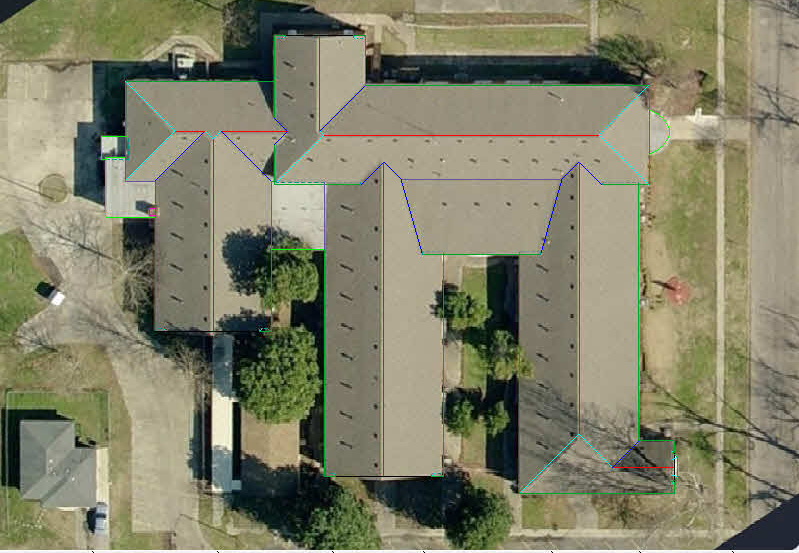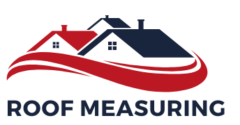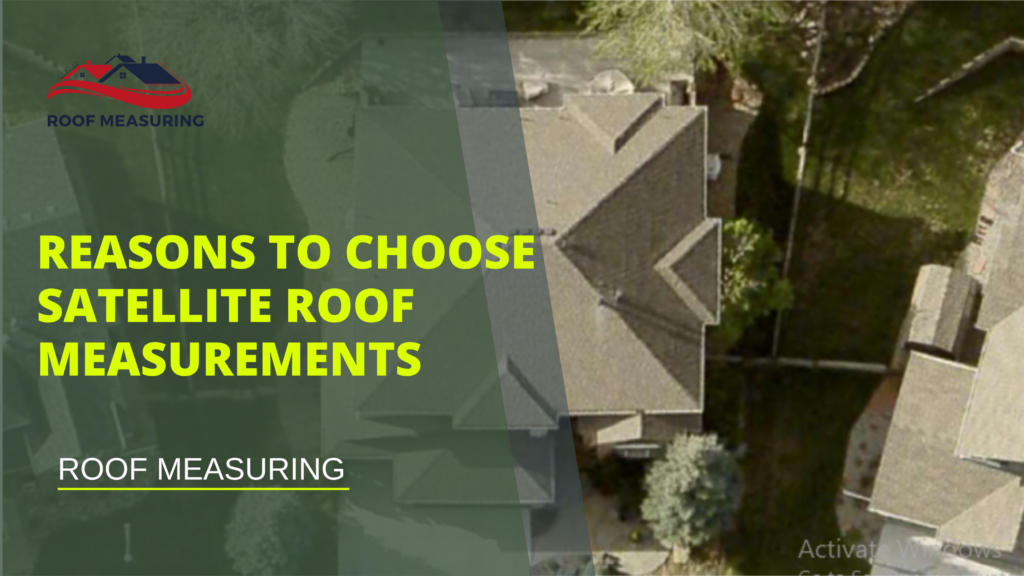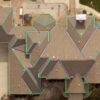Roof measurements are crucial for various purposes, including roofing projects, insurance claims, property assessments, and solar panel installations. Traditionally, roof measurements have been carried out manually by on-site surveyors. However, with advancements in technology, satellite-based roof measurement has emerged as a superior alternative. In this article, we will explore ten compelling reasons to choose satellite roof measurements over traditional methods, comparing the two approaches to highlight the benefits of satellite technology.
1. Accuracy
Traditional Method:
Manual roof measurements are prone to human error, especially on complex roof designs or steep pitches. Surveyors may struggle to access certain areas or accurately measure irregular roof shapes. Additionally, the accuracy of measurements can vary depending on the experience and skill level of the surveyor.

Satellite Method:
Satellite roof measurements provide a high level of accuracy by using advanced imaging technology and algorithms. Satellite imagery can capture every detail of the roof, including complex shapes, angles, and elevations. This ensures that measurements are precise, reducing the likelihood of errors that could lead to costly mistakes during construction or repairs.
2. Safety
Traditional Method:
Manual roof measurement requires surveyors to physically climb onto the roof, which can be dangerous, particularly in adverse weather conditions or on steep or fragile roofs. Falls from roofs are a significant risk, leading to potential injuries or even fatalities.
Satellite Method:
Satellite roof measurements eliminate the need for surveyors to physically access the roof, thereby removing the associated risks. The entire process is conducted remotely, ensuring the safety of all parties involved. This is particularly important for roofs that are difficult to access or pose significant safety hazards.
3. Time Efficiency
Traditional Method:
Manual roof measurement can be time-consuming, particularly for large or complex roofs. Surveyors need to carefully measure each section of the roof, which can take several hours or even days, depending on the size and complexity of the roof. Additionally, travel time to and from the site adds to the overall duration.
Satellite Method:
Satellite roof measurements are incredibly time-efficient. The process can be completed in a fraction of the time it takes for manual measurements. Once the satellite imagery is obtained, advanced software processes the data and generates accurate measurements within minutes. This allows for faster project planning and execution.
4. Cost-Effectiveness
Traditional Method:
Manual roof measurements require on-site visits, which involve labor costs, travel expenses, and the use of specialized equipment. For large or remote properties, these costs can add up significantly. Additionally, any errors in measurement may result in additional costs for corrections.
Satellite Method:
Satellite roof measurements are more cost-effective as they eliminate the need for on-site visits and reduce labor costs. The process is streamlined, with minimal human intervention required, leading to lower overall expenses. Furthermore, the high accuracy of satellite measurements reduces the likelihood of costly errors and rework.
5. Accessibility
Traditional Method:
Some roofs are difficult or impossible to access due to their height, slope, or structural condition. In such cases, surveyors may be unable to obtain accurate measurements, or they may need to use additional equipment, such as drones or scaffolding, which increases the complexity and cost of the process.
Satellite Method:
Satellite roof measurements provide unparalleled accessibility. Since the measurements are taken remotely, there are no limitations based on the roof’s physical characteristics. Whether the roof is steep, fragile, or located in a remote area, satellite technology can accurately capture its dimensions without any on-site challenges.
6. Environmental Impact
Traditional Method:
Manual roof measurements often involve the use of vehicles, equipment, and materials that contribute to carbon emissions and environmental degradation. Additionally, the physical presence of surveyors on the roof can cause wear and tear, particularly on older or more fragile structures.
Satellite Method:
Satellite roof measurements have a lower environmental impact as they eliminate the need for on-site visits and reduce the use of vehicles and equipment. The entire process is conducted digitally, minimizing the carbon footprint associated with roof measurements. This makes satellite measurements a more sustainable option.
7. Consistency
Traditional Method:
The accuracy and quality of manual roof measurements can vary depending on the surveyor’s experience, the tools used, and the conditions on the day of the measurement. This lack of consistency can lead to discrepancies in measurements, particularly when multiple surveyors are involved.
Satellite Method:
Satellite roof measurements offer a high level of consistency as they are based on standardized processes and algorithms. The use of advanced imaging technology ensures that measurements are uniform, regardless of who conducts the analysis. This consistency is particularly beneficial for large-scale projects or companies that require standardized data across multiple properties.
8. Data Integration
Traditional Method:
Manual roof measurements typically result in paper-based reports or digital files that may not be easily integrated with other project management or design software. This can lead to inefficiencies in the planning and execution of roofing projects.
Satellite Method:
Satellite roof measurements are often delivered in digital formats that can be easily integrated with various project management, design, and estimation software. This seamless integration allows for more efficient project planning, cost estimation, and material ordering. Additionally, the digital data can be easily shared and accessed by multiple stakeholders, enhancing collaboration.
9. Scalability
Traditional Method:
Scaling manual roof measurement operations can be challenging, particularly when dealing with a large number of properties or projects. Each roof requires a separate site visit, which can strain resources and lead to delays in project timelines.
Satellite Method:
Satellite roof measurements are highly scalable. Whether you need measurements for a single property or thousands of properties, the process remains efficient and cost-effective. Satellite technology allows for the simultaneous analysis of multiple roofs, making it ideal for large-scale projects or companies with extensive property portfolios.
10. Historical Data and Monitoring
Traditional Method:
Manual roof measurements provide a snapshot of the roof’s dimensions at a specific point in time. However, they do not offer the ability to track changes or monitor the roof’s condition over time without conducting repeated on-site visits.
Satellite Method:
Satellite technology allows for the collection of historical data and ongoing monitoring of roofs over time. By analyzing satellite imagery from different periods, it is possible to track changes in the roof’s condition, identify potential issues, and plan maintenance or repairs proactively. This long-term monitoring capability provides valuable insights that are not possible with traditional methods.
Conclusion
Satellite roof measurements offer numerous advantages over traditional manual methods. They provide superior accuracy, safety, and efficiency while being more cost-effective and environmentally friendly. The scalability, consistency, and data integration capabilities of satellite technology make it an ideal choice for a wide range of roofing projects, from small residential properties to large commercial complexes. By choosing satellite roof measurements, property owners, contractors, and project managers can benefit from a more reliable and streamlined process, leading to better project outcomes and reduced costs. As technology continues to advance, satellite roof measurement is poised to become the industry standard, replacing traditional methods with a more efficient and effective approach.



